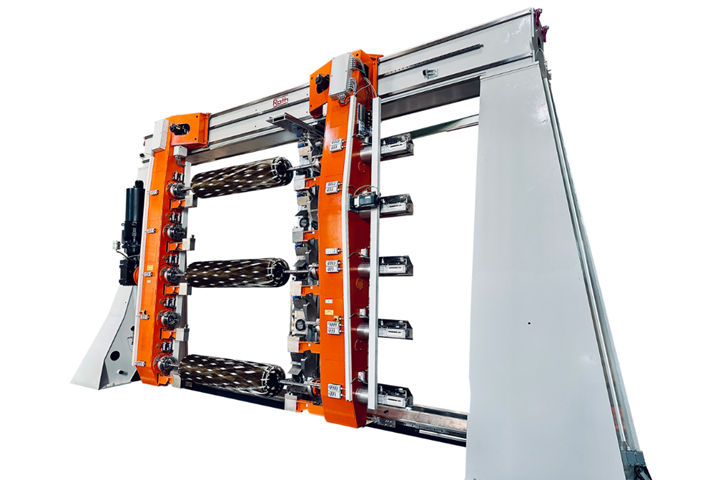Roth introduces multi-spindle gantry filament winder concept
The filament winding expert’s new design is adaptable to individual requirements, is suitable for a variety of component applications and offers additional options for process data acquisition.
Roth Composite Machinery (Steffenberg, Germany) highlights its new multi-spindle gantry winding machine concept. The new design, suitable for small and light, as well as large and heavy components, enables the machine’s use for a wide range of production processes. According to managing director Dr. Andrea Reimann, “we can offer our customers another plus in versatility and optimize the precision as well as the quality assurance thanks to the new possibilities of process data acquisition.”
A new machine structure — two solitary solid gantry stands with a high base area — guarantee that it can handle liners with a diameter of up to 1,000 mm. Offering the needed rigidity and frame support, the gantry stands can be retrofitted to a duplex principle, if required by the customer.
The new base frame design also enables the lower spindle to work at a decreased height, making the entire machine lower, more compact and reduces the distances between the spindles. At the same time, it requires considerably less maintenance, according to Roth.
The machine’s degree of automation has been increased via the use of the Roth RCA (automatic cutting and applying of the rovings/fibers). For the winding of pressure vessels, the machine setup has, among others, an automatic filling and pressure measuring system that can create and regulate the necessary inner pressure of the liner during the winding process. In addition, the mandrel supports, being equipped with weight gauges, are said to provide more accurate measurements than previously achieved for the production data collection to record and track the high level of quality in the Roth CAQ system.
Importantly, the filament winder’s extreme rigidity minimizes mechanical influences experienced during fiber laying, ensuring maximum precision when it comes to fiber placement. Constant fiber delivery speeds of up to 4.5 m/sec can be realized at this high level of precision. The system’s impregnation station is suitable for processing carbon fibers as well as basalt, glass or other fibers and reduces roving strains due to decreased wrap angles; quick-change mechanisms in the impregnating bath are particularly easy to handle and robustly designed, according to the company.
An extensive sensor system ensures the correct setup process and guarantees a production operation with the same adjustments and impregnating ratios before and after the setup process.
A high-performance drive concept combined with the new machine frame structure reportedly enables performance increases of around 40% compared to the international state of the art.
Roth’s filament winding machines are capabale of traditional wet winding, towpreg and dry winding applications. New spool fixtures at the spool creel facilitate the placing of full spools as well as the removal of empty sleeves.
Recently, this multi-spindle gantry winding machine concept — in a five-spindle configuration — was put into operation at a well-known European pressure vessels manufacturer.
Related Content
-
A new era for ceramic matrix composites
CMC is expanding, with new fiber production in Europe, faster processes and higher temperature materials enabling applications for industry, hypersonics and New Space.
-
The potential for thermoplastic composite nacelles
Collins Aerospace draws on global team, decades of experience to demonstrate large, curved AFP and welded structures for the next generation of aircraft.
-
Large-format 3D printing enables toolless, rapid production for AUVs
Dive Technologies started by 3D printing prototypes of its composite autonomous underwater vehicles, but AM became the solution for customizable, toolless production.













.jpg;maxWidth=300;quality=90)



